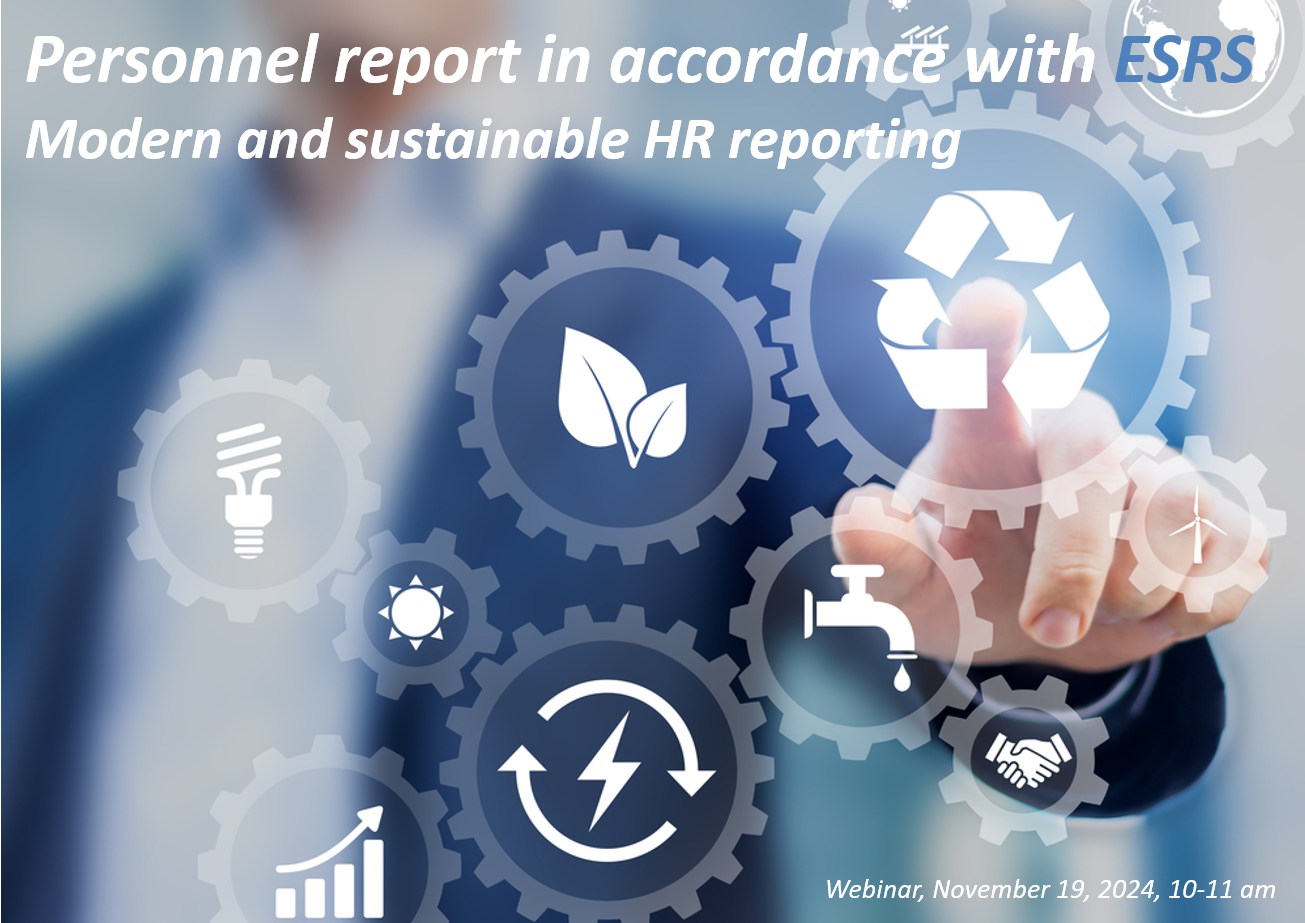On Tuesday, November 19, 2024, the STRIMacademy hosted a webinar on ‘Personnel report according to ESRS: Modern and sustainable HR reporting’.
The STRIMgroup – which also includes the STRIMacademy – is particularly distinguished by its innovative integration of the Sustainable Development Goals (SDGs) and the CSRD-/ESRS standards, from strategy development to reporting. It supports customers and partners in consistently aligning their business strategies with international standards and legal requirements.
The starting point for this webinar was a look at the percentage distribution of activities involved in preparing a sustainability report in accordance with ESRS. Regardless of the size of the company, the industry and the scope of the report, “data collection and analysis” is the main effort driver. That is why the focus was on this.
Below we have summarized the key statements of the presentation on which the webinar is based:
1. Current status of CSRD implementation
The CSRD (Corporate Sustainability Reporting Directive) significantly expands the reporting requirements for European companies. It affects not only ecological, but also social and governance aspects. According to a 2024 PwC survey, many companies see the implementation of ESG topics as both a regulatory challenge and an opportunity to increase their attractiveness to investors and employees. The requirements will apply to large companies from 2024, with the ESRS (European Sustainability Reporting Standards) providing detailed disclosure requirements.
According to a McKinsey survey, the results suggest that organizations in some sectors, such as energy and retail, are already moving beyond simply trying to meet regulatory requirements and are seeing ESG as an opportunity for growth.
2. Sustainability report with a focus on ESRS S1
The ESRS S1 standard targets a company’s own workforce, refers to employees and so-called external workers, and includes comprehensive disclosure requirements, including diversity, equal opportunities, working conditions and remuneration. Reporting requires stakeholder engagement, a materiality analysis and specific targets to improve social parameters such as inclusion and health protection. This disclosure enables companies to both meet regulatory requirements and strengthen their brand as a responsible employer.
The entire reporting process for preparing a sustainability report should take at least six months. This report becomes an integral part of the annual report. There is a fixed structure with four chapters.
3. Efficient and transparent data provision
For effective reporting, companies must collect their data centrally and consistently. Challenges exist in the availability, traceability and security of data. Many companies still use manual processes such as Excel, which is inefficient in the long run. IT architectures – ERP-centric, one platform, best-of-breed – facilitate data collection, consolidation and analysis. The cultural change towards data-driven and evidence-based decision-making is a critical success factor.
In our experience, an audit-proof, risk-minimizing, cost-efficient and flexible technology solution for reporting is characterized by four main features:
- Seamless data connectivity across different data types, formats and sources.
- Rapid integration and preparation of sustainability data for reporting, analysis and KPI monitoring, as well as target assessment.
- Increased reliability, trust and governance for reporting with full auditability of data origin.
- Flexibility and self-service capabilities to easily incorporate changes in the evolving ESG landscape.
4. Development stages from compliance to control and communication
CSRD reporting can be the starting point for holistic corporate management. Tools such as the Sustainability Balanced Scorecard (SBSC) integrate ESG goals with key performance indicators relevant to management. In doing so, sustainability goals can either be viewed as an independent perspective or integrated into existing management tools. This enables companies to manage sustainability measures in a targeted manner, measure their impact and communicate these findings transparently. A data- and evidence-based strategy also strengthens the positioning towards stakeholders and investors.
Conclusion
Combining people analytics with CSRD-compliant reporting according to ESRS offers companies the opportunity to go beyond pure compliance. Through efficient data systems and strategic integration of ESG goals, companies can drive a sustainable transformation of their HR and corporate strategy. This not only strengthens competitiveness, but also builds trust among employees and stakeholders.

